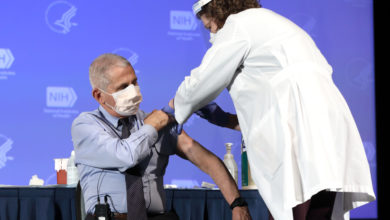Let’s Talk About Sex In Ontario’s Schools

Next week it’s back to school here in Ontario, which means it’s time for the parental protests about the new sex-ed curriculum to increase in volume. They kicked off yesterday with a planned series of protests outside the offices of Liberal members of the provincial parliament.
I have a particular interest in this issue because the new Health and Physical Education curriculum is entering the school system at the same time as my son E., who starts junior kindergarten next week. Given the previous curriculum was designed in 1998 (implemented the following year), I think the odds are good that this is the education I can expect E. will receive during his time in elementary school.
And you know what? I couldn’t be happier.
Ontario was badly overdue for a change. By sticking with the old one for so long, we had earned the dubious distinction of being the province with the most outdated curriculum in the country.
To put it in perspective, the children who started junior kindergarten at the age of four in 1999 will be celebrating their twentieth birthdays this year. I have taught some of them at university. They have grown and changed to the extent they are likely unrecognizable to their kindergarten teachers, but the health curriculum has remained stagnant.
 The previous health curriculum is older than Facebook (2004), YouTube (2005) and iPhones (2007), and predates common use of ‘sexting’ by a decade. It has no mention of cyberbullying, gender identity, homophobia, or sexual orientation.
The previous health curriculum is older than Facebook (2004), YouTube (2005) and iPhones (2007), and predates common use of ‘sexting’ by a decade. It has no mention of cyberbullying, gender identity, homophobia, or sexual orientation.
In 1999, I thought I was the height of sophistication chatting to locals on my town’s BBS message board and tracking down my friends on ICQ. (My students, the ones who were four in 1999, probably have no idea what any of that means.)
To call the old health curriculum outdated is a massive understatement.
And yet, it’s taken FIVE years to get this updated curriculum implemented. The revisions were originally released in January 2010, but public outcry from a small, but vocal, minority (including then-Conservative leader Tim Hudak) caused then-premier Dalton McGuinty to shelve the curriculum in April. The curriculum was brought back to life in February 2013 when the new Liberal Premier, Kathleen Wynne, promised to implement it during her first press conference. The government is now heavily promoting the curriculum (you can watch a YouTube video made by the government here).
The entire curriculum can be found here, for your reading pleasure. There are many, many good articles online clearly (and calmly) explaining what is new, what isn’t, and what sort of misinformation is being spread by its critics (e.g., here, here, here and here). You can even take a quiz to test your knowledge here.
If you read the online comments on articles discussing the changes, there isn’t a single part of the new curriculum that doesn’t have someone angrily denouncing it.
Most baffling for me, some people are irate that students in Grade One will learn about body parts and genitalia, including the anatomically correct words. I just can’t see what’s controversial about six-year-olds knowing how to accurately label parts of their own bodies, especially since this could help protect the children from sexual predators.
We have always used the standard terminology with our son. And yes, while it was somewhat uncomfortable to have my two-year-old bellowing, “I DON’T LIKE YOU TOUCHING MY PENIS!” when changing his diaper in a public location, I took solace in the fact that if it unnerved me, it would hopefully be far more unsettling for someone who had no right to be doing that.
Likewise, we’ve been teaching E. about consent since he was a baby (along the lines of the guidelines for very young children (ages 1-5) found here). So I applaud the designers of the curriculum for including even a very limited concept of consent (being able to say ‘no’ in a scary situation) in Grade Two. And when E. is old enough, I hope I can still find this, which remains one of the best explanations of consent (especially relating to sex) that I have ever read.
Right now E. asks about five hundred million questions a day (or that’s what it feels like by 7:30 p.m.). We have answered them truthfully, to the best of our abilities and to the limit of what he is asking. He has asked why he has a penis and why I don’t. He has asked how babies are born and what they eat and how a cow’s udder is like a woman’s breasts. He knows that a baby grows in its mother’s uterus, not her tummy. He has yet to ask how the baby got into the uterus in the first place, but I’m sure it’s coming.
Husband and I hope that E. will always feel comfortable bringing his questions to us, but I’m glad he’ll still have school as a backup. And for some of his peers, the teachers may be their best available resource.
Not all children have households where they can safely ask questions about their changing bodies.
Not all children have parents or caregivers who feel comfortable answering the questions being asked.
Every child deserves to learn in a safe environment. They deserve to be given access to factual, accurate, non-judgmental information. They shouldn’t have to rely on their older siblings, their friends, or (worst of all) the Internet.
Critics claim that the new curriculum will pressure children into having sex (it doesn’t) and that it will offer how-to classes in masturbation (also untrue).
The moral panic over the new curriculum (which included thousands of students being kept out of school for a week in May and now has some parents scrambling to find alternative means of educating their children) is largely unnecessary. Parents who vehemently oppose the new curriculum can opt to take their children out of the classes. Yes, I know those children are still going to hear about the classes on the playground, but if you think that’s the limit of what your children are going to learn from their friends about puberty and sex, you’re in for a rude awakening.
We can’t keep them innocent. More to the point, we shouldn’t even try. We’re not keeping them safe by sticking our collective heads in the sand and hoping things like sexting and cyberbullying will just pass them by. And protesting the curriculum’s inclusion of concepts like gender identity and sexual orientation isn’t just ignorant, it’s discriminatory. Yesterday, Tony Pontes, the Director of the Peel District School Board, gave a speech in which he warned parents that requests to opt-out of the sections of the curriculum concerning equity and inclusion would not be tolerated, citing Ontario’s Human Rights Code. “Supported by legal opinion, bolstered by our core values, I would no more say yes to someone wanting a child excluded because of a discussion about LGBTQ than I would a discussion about race or gender,” said Pontes.
This is an incredibly positive development, and Pontes should be applauded for taking such a bold stance. I hope to see more of Ontario’s school boards following suit in the next few weeks.
So, hands off my son’s sex-ed curriculum, protesting parents. If you want to pull your children out of classes that will encourage them to develop healthy attitudes towards puberty and sexuality, teach them to treat other people’s differences with respect, and help them navigate the perils of life online, that’s your prerogative. But don’t you dare try to keep all the children of this province trapped in the twentieth century.
Ontario is moving forward (finally). I’m glad that my son will receive the education he needs and deserves. And when he asks me loudly (because it is always loudly) in the grocery store, “Mummy, do you have a vagina?”, I’m going to stand up straight, smile, and say, “I sure do!” It’s not a dirty word. Kudos to the Ontario Ministry of Education for recognizing that.
Featured image Jonathan Rolande, via flickr. Other images Stefanie Kaufmann and Lucélia Ribeiro, via flickr here and here.




